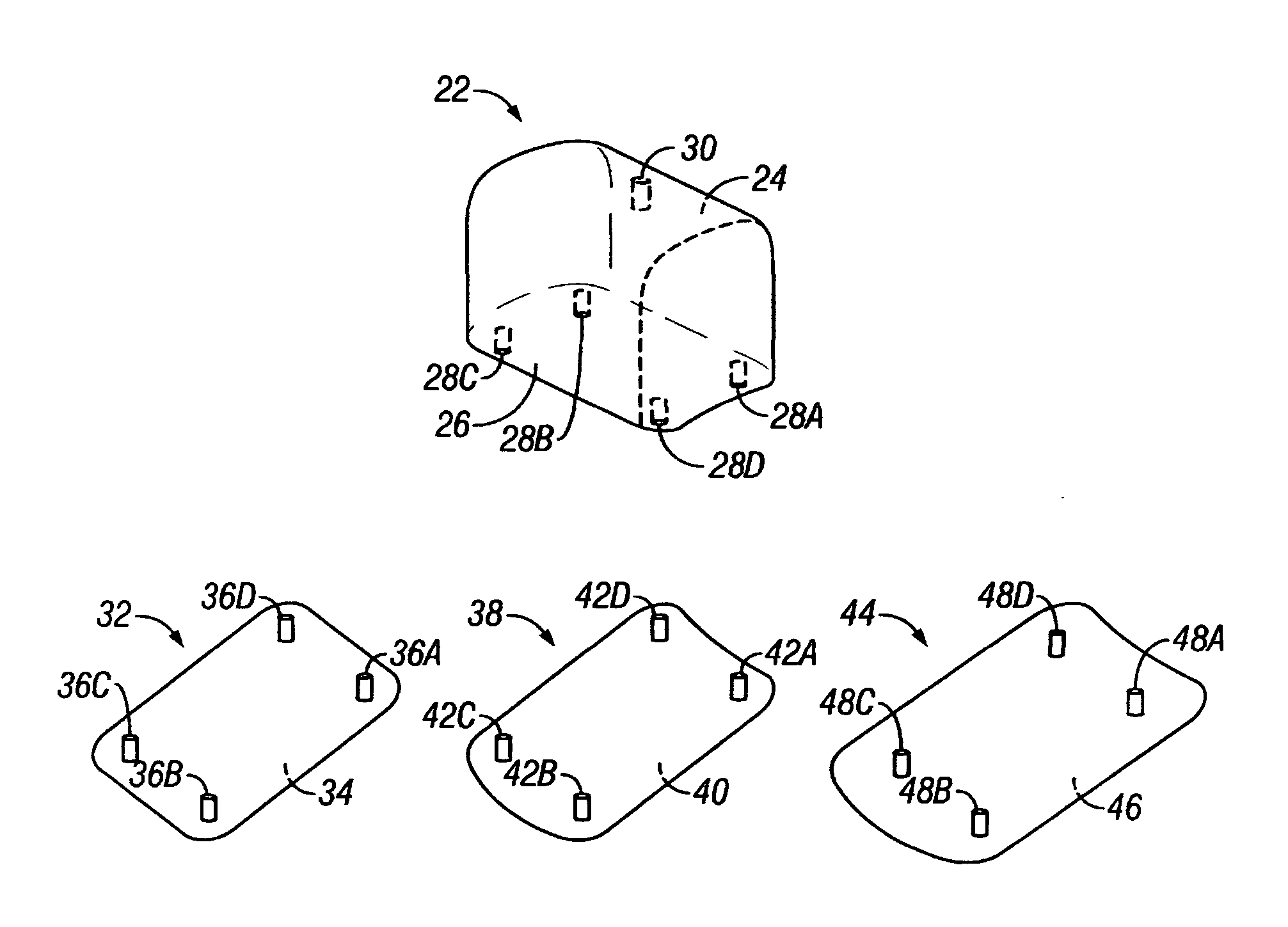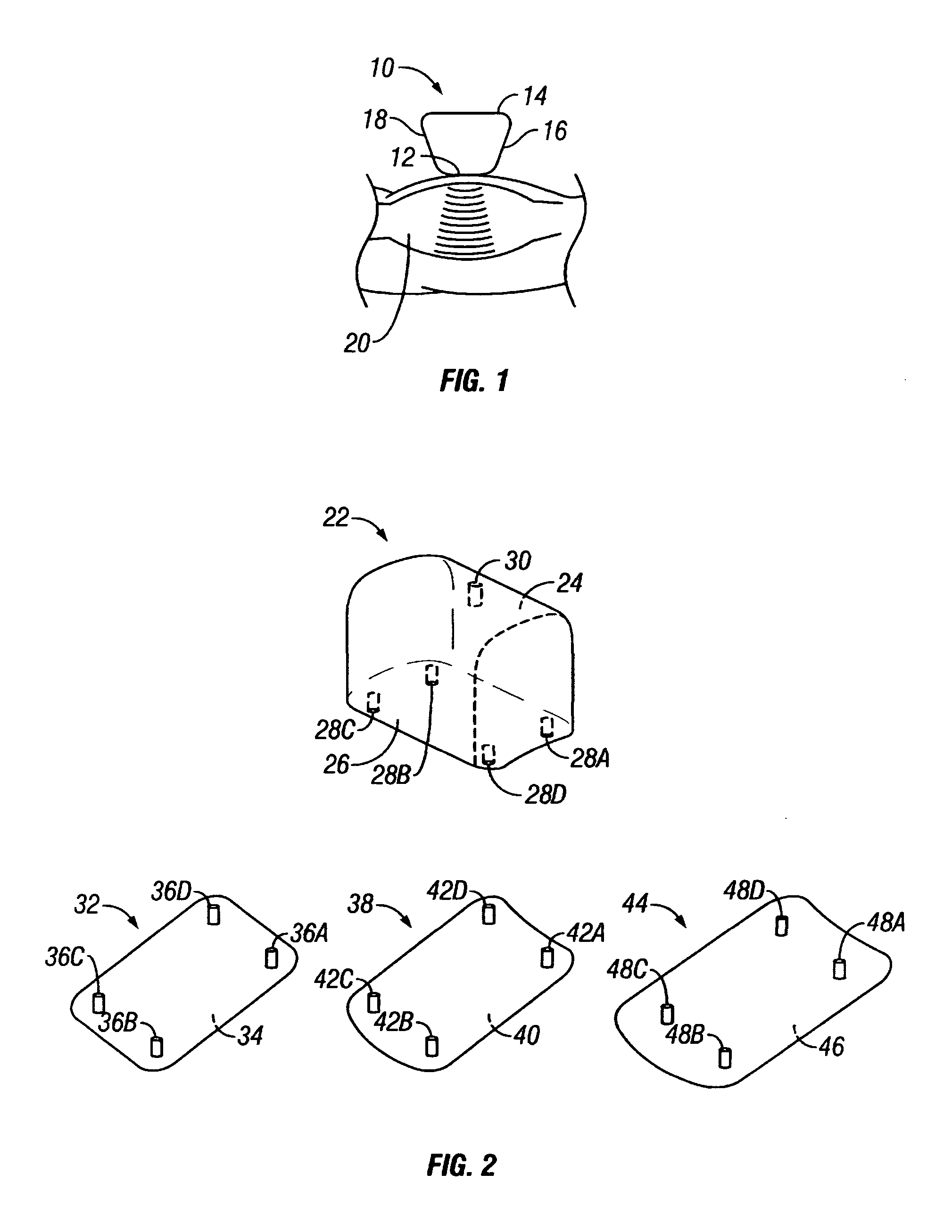Method of exercising selected muscle tissue
a muscle tissue and muscle technology, applied in the field of exercise devices, can solve the problems of not being able to develop the muscles in a precise and controllable manner, providing no direct resistance to the bulging of muscles, and not being able to accurately control the actual changes of the body, so as to bring the muscles to a greater degree of exhaustion, precise control of the resistance level, and the effect of reducing resistan
- Summary
- Abstract
- Description
- Claims
- Application Information
AI Technical Summary
Benefits of technology
Problems solved by technology
Method used
Image
Examples
Embodiment Construction
[0026]Referring to FIG. 1, a member 10 is depicted, with surface 12 in contact with a biceps muscle 20. If a user grasps surface 14 and applies pressure in a downward direction, this pressure will be transmitted to the muscle tissue approximately in line with surface 12. The size and shape of the surface in contact with the muscle will dictate the pattern in which pressure is distributed to underlying tissue. For example, surface 12 will concentrate pressure into a narrow column of muscle tissue, as depicted by the shaded area of muscle. A relatively large magnitude of resistance can be generated per square inch of muscle, making surface 12 ideal for inducing muscle growth. However, the member may be rotated so that surfaces 14, 16, or 18 contact the muscle. Surfaces that have a relatively large area such as surface 14, will transmit pressure that is spread out over a broader range of muscle tissue, making them suitable for creating muscle tone.
[0027]Although members can be construc...
PUM
 Login to View More
Login to View More Abstract
Description
Claims
Application Information
 Login to View More
Login to View More - R&D
- Intellectual Property
- Life Sciences
- Materials
- Tech Scout
- Unparalleled Data Quality
- Higher Quality Content
- 60% Fewer Hallucinations
Browse by: Latest US Patents, China's latest patents, Technical Efficacy Thesaurus, Application Domain, Technology Topic, Popular Technical Reports.
© 2025 PatSnap. All rights reserved.Legal|Privacy policy|Modern Slavery Act Transparency Statement|Sitemap|About US| Contact US: help@patsnap.com



